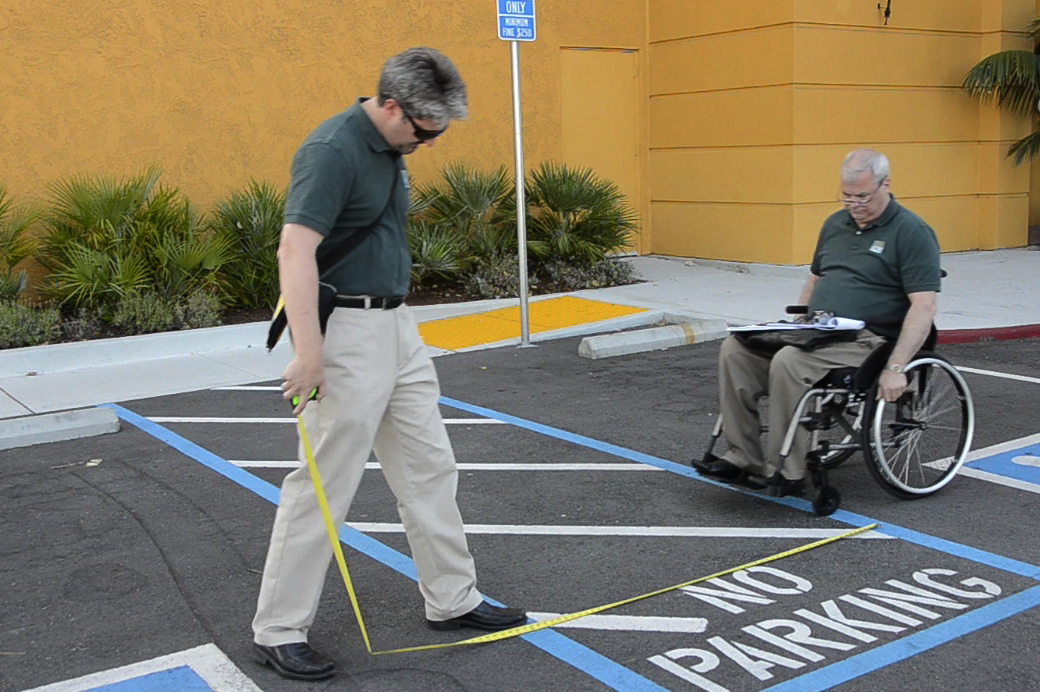Physical Accessibility Complaint
Learn the best defense against physical accessibility complaints and three simple action steps to follow if one is filed.

This discussion focuses on privately-owned businesses that provide goods and services to the public. Some examples include a hotel, restaurant, retail store, bank, museum, hospital, theater, convention center, or stadium. Title III of the Americans with Disabilities Act (ADA) requires such places of ‘public accommodation’ to remove barriers that prevent people with disabilities from accessing their goods and services.
Lawsuits about accessibility barriers in facilities of public accommodations have grown from 2,722 in 2013 to 11,452 in 2021, according to Seyfarth Shaw’s research team. That’s a 320% increase in eight years. Lawsuits pertaining to website communications are increasing in number. But there are always complaints about physical access issues for people with disabilities.
The best defense against ADA complaints is a good offense.
Assessing your facilities to determine ADA compliance and establishing a plan to address issues is the best strategy to avoid ADA complaints and potential litigation.
Accessible Parking and Entrances
The priority of barrier removal is providing accessible parking and an accessible entrance. Some litigants may look for compliant accessible parking at facilities to determine if they should further investigate other accessibility issues on the property. When highly visible exterior areas, such as parking, are fully compliant, your facility will be less likely to draw attention from passers-by.
Public Access to Goods and Services
The priority of barrier removal is providing accessible parking and an accessible entrance. Some litigants may look for compliant accessible parking at facilities to determine if they should further investigate other accessibility issues on the property. When highly visible exterior areas, such as parking, are fully compliant, your facility will be less likely to draw attention from passers-by.
If you are served with a complaint, there are some basic steps you may follow to help reach a resolution.
Having information about your facility’s accessibility status helps prepare you to respond to complaints. It also enables you to develop a proactive plan. A plaintiff’s goal when filing a complaint should be to bring about changes that make the facility accessible, and if you are entering the discussion with a plan to do so, the stage is set for a more agreeable resolution.
Step 1: Verify if the issues in the complaint are valid.
The priority of barrier removal is providing accessible parking and an accessible entrance. Some litigants may look for compliant accessible parking at facilities to determine if they should further investigate other accessibility issues on the property. When highly visible exterior areas, such as parking, are fully compliant, your facility will be less likely to draw attention from passers-by.
Step 2: Determine what standard was used by the plaintiff.
The priority of barrier removal is providing accessible parking and an accessible entrance. Some litigants may look for compliant accessible parking at facilities to determine if they should further investigate other accessibility issues on the property. When highly visible exterior areas, such as parking, are fully compliant, your facility will be less likely to draw attention from passers-by.
Step 3: Determine if there are other issues not listed on the complaint that may put you at risk.
The priority of barrier removal is providing accessible parking and an accessible entrance. Some litigants may look for compliant accessible parking at facilities to determine if they should further investigate other accessibility issues on the property. When highly visible exterior areas, such as parking, are fully compliant, your facility will be less likely to draw attention from passers-by.